
Time to Telework. How is it Working?
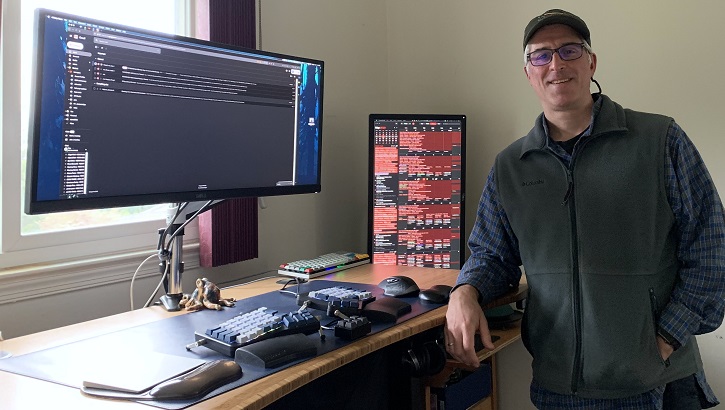
Years of developing the physical and interpersonal aspects of teleworking has proven fruitful for Troy Kitch. (Courtesy Photo/Maria Bulaon Kitch)
Office is where the worker is, and for many civilian and government employees, the advent of the coronavirus has meant taking our laptops and a few choice desk items from the office and setting up shop at home.
Whether young or old, a first-timer or seasoned teleworker, the experience has been insightful for all.
Below are three government teleworkers from various professions and different parts of the country sharing what they’ve learned.
Darren Court
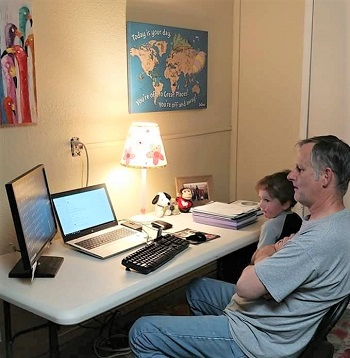
White Sands Missile Range Museum Curator Darren Court receives family support while teleworking at home. (Courtesy Photo/Melissa Court)
Darren Court has served as the Museum Curator at White Sands Missile Range, New Mexico, for the past 13 years. He began teleworking for the first time in late March when his den became his new office.
What are some of your biggest challenges teleworking vs working at the office? Getting distracted by the kids is sometimes a problem. With seven kids at home, and most of them trying to do their own work, it can be a bit tough at times. With so many people around the world working from home, it's been difficult getting images and permissions to use in the new museum exhibits from various archives across the U.S. and Europe.
A recent study by one organization found its employees' productivity increased during a telework experiment. Are you more productive/efficient? I've certainly noticed this - I've been much more productive regarding researching exhibit material and creating content for the Facebook page, and later use on the website.
What do you do to help separate work time from free time? I still haven't mastered that! I find myself in the den working long after everyone has gone to bed.
Adriana Salas de Santiago
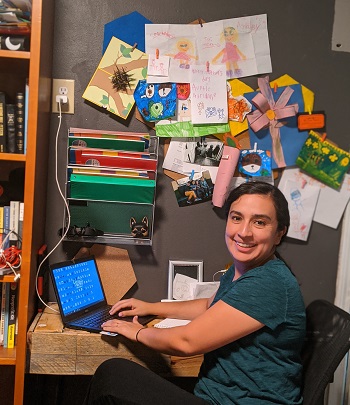
Combining working, parenting and teaching can be crazy and hectic, but everyone needs to remember, “We’re all doing a great job!” reminds Adriana Salas de Santiago. (Courtesy Photo/Adriana de Santiago)
Adriana Salas de Santiago is a former WSMR employee who now works as a federal outreach coordinator in El Paso, Texas, where her new job has required her to work exclusively as a teleworker for the past 15 months in various “office” locations that include her garage, dining room table and bedroom.
Do you like teleworking? Pre COVID-19, it was somewhat manageable. Right now it's a bit hectic and causing a lot of anxiety.
What do you like about it? I like being able to spend time with my children and getting to know them a lot better.
What do you not so like about it? Having to balance homeschooling with four young kids is EXTREMELY difficult. That alone is a full-time job, and then you throw in conference calls for a full-time job and virtual meetings along with actually doing your job after those meetings. And there can be interruptions when one of the kids tell me they accidentally exited out of something, the teacher needs to ask me a question, or to tell me they finished their first task and they need something else to do.
How do you help separate work from free time? It's really important to disconnect. I know it's redundant and cliché but it's absolutely vital unless you're okay with going crazy. Allow yourself time for lunch, and do not take your work phone with you.
What are some of your biggest challenges teleworking? Working in an office allows you to get away, to have a space away from home where you can be an adult (if you have kids) and feel like you're contributing to something bigger. When you work from home, the message and the importance of your job sometimes gets lost. It is difficult to stay organized and on task. You don't have anyone to chat with and the only way to mimic chatting is through text, email or phone, which makes you feel a little awful knowing you're always "on" or connected to your phone even after hours because you find yourself texting your co-workers when that time should be allotted to your family.
What advice would you give someone if they were just going to start teleworking? Create a designated work space, create a schedule to allow yourself time for breaks and lunch. Disconnect from your "office" and your phone as soon as it is time to disconnect.
Has teleworking changed for you since the coronavirus has now prompted thousands of civilian and government workers to join you as fellow teleworkers? I have more people to vent to who can now relate to me. People with young children or family members to take care of are in a completely different ballpark than young single professionals or empty nesters. I spent a good part of 20 minutes this morning venting to a partner about the difficulties of homeschooling when most of our interactions up to this point have been very professional.
Troy Kitch
Troy Kitch is a seasoned teleworker who has been alternating work stations at home and office for several years with the National Ocean Service, which is part of the National Oceanic and Atmospheric Administration in Silver Spring, Md.
What is your job? I am the lead developer and managing editor for the National Ocean Service website. I spend about half of my time as a web developer; a quarter writing stories or producing video, audio, or infographic content; and another quarter managing the writing and web development assignments of our staff and editing stories for the website.
When did you begin teleworking? I began teleworking about eight years ago. Our office started out with one day of telework a week; and about four years ago, expanded to two days a week.
Where is your "office"? My office is in a dedicated room of my house. Probably the most important aspect of this is that I have a door I can close. Over the years, I've invested in creating my vision of an ideal workspace. I have a desk that can be raised and lowered, so I can alternate between standing and sitting. I have a split keyboard set up that helps immensely with my RSI (Repetitive Strain Issues). I have two input devices — a trackpad on the left and a mouse on the right — so that I can alternate hands to also help ward off RSI issues. I have a widescreen 32-inch monitor on my desk. ..
What kind of routine did you establish? It's very easy to start the workday and lose track of time. When I began teleworking years ago, I often would barely move over the duration of the workday. Over time, I've developed a routine to ensure I frequently get away from the keyboard to break up the day. I use a timer to let me know when to break. During breaks, I walk away from my desk, stretch, go outside, and sometimes meditate a bit. I also set times of the day to deal with email and, during those times, I will frequently go outside with my laptop to have a change of scenery. I also have flexibility with my time, so I will often work a few hours in the late evening, freeing up an hour or so during the day to go for a hike and take a short nap. A good hike and a short nap during the workday does wonders for productivity and positivity, in my experience.
How do you help separate work time from free time? If possible, it really helps to have a separate space for telework that you can set up how you like and leave it that way. Another thing that helps me is "dressing for work." I don't dress very formally, but I do typically change clothes to start my telework day and, once the day ends, change into something else.
What are some of your biggest challenges teleworking vs office work? One challenge is with group video meetings — many people keep very quiet on video calls, some participate a bit too much, and it can be hard to get an inclusive group discussion going. I think the key is to spend more time preparing ahead of time for meetings, and only hold meetings if you really need to do so. I think everyone benefits in having fewer, shorter meetings to accomplish tasks. Another hurdle is that telework relies on a good internet connection. For my job, and for many jobs these days, if the internet goes out or if bandwidth is overtaxed, it's hard to get work done.
What advice would you give someone if they were going to start teleworking next week for the first time? Establish a routine over time, built around taking periodic breaks. As much as possible, set up a nice environment so you enjoy being there. If you feel like you need to get away for a bit and can do so, then step away. Twenty minutes of focused attention on a task is more productive than an unfocused hour.
A recent study by one organization found its employees' productivity increased during a telework experiment. Are you more productive/efficient? I am much more efficient working from home, as there are fewer distractions. At the office, hours a day can be eaten up with copious meetings and with random people dropping by. I also don't have to deal with a three-hour commute, and that time saved can be invested on healthier endeavors that I think make me more productive.
Has teleworking changed for you since the coronavirus prompted thousands of civilian and government workers to join you as fellow teleworkers? Some jobs are more easily done remotely than others. For the type of work I do, it works quite well. For people whose daily schedule revolves around meetings and close interaction with others, I think it can be much more challenging. Perhaps the biggest challenge for others is for those who have young children at home, given that schools are closed. Trying to work, maintain a household, keep children occupied, etc., has been very taxing for many people that I work with.
Is there anything else you would like to add? If you have a chat capability at your workplace, it can be a nice way to maintain a connection with workmates.
MHS Beneficiaries Turn to Online Resources to Manage Personal Care During Pandemic
Article
6/12/2020
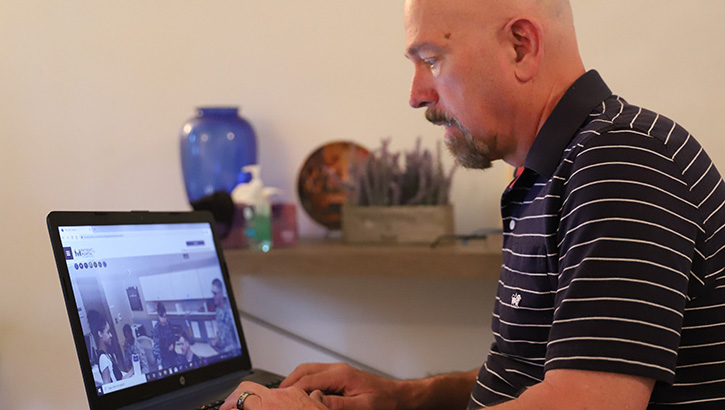
The TOL PP team added several COVID-19-related enhancements to the portal.
Air Force International Health Specialists bring experience to pandemic response
Article
6/12/2020
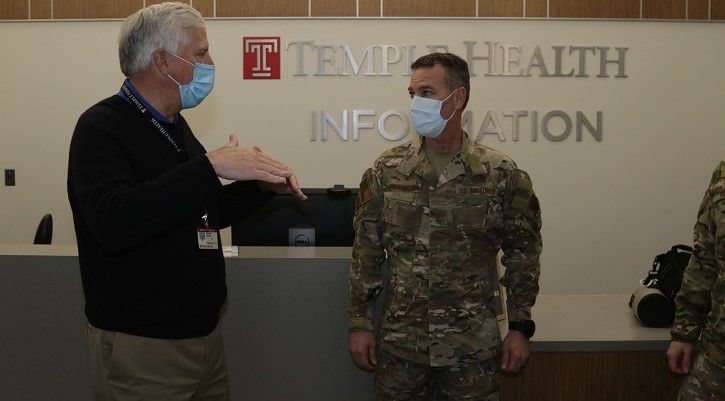
Stepping out of your comfort zone and being part of the larger DOD mission is crucial to grow as a military medic.
Coming together during a pandemic to provide life-giving blood
Article
6/11/2020

Service members step up as blood drives adapt to COVID-19 guidelines
Air Force medical recruiting up while recruiters, applicants serve their communities
Article
6/10/2020
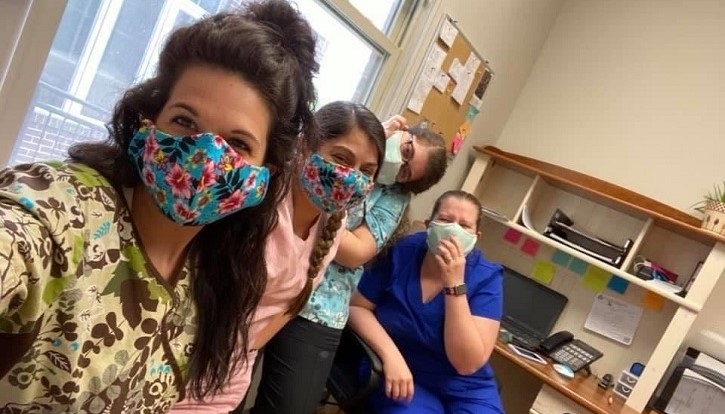
The pandemic is increasing unemployment rates, driving many people to seek career paths in health sciences and military medicine.
Searching for clues under the microscope to understand COVID-19
Article
6/10/2020
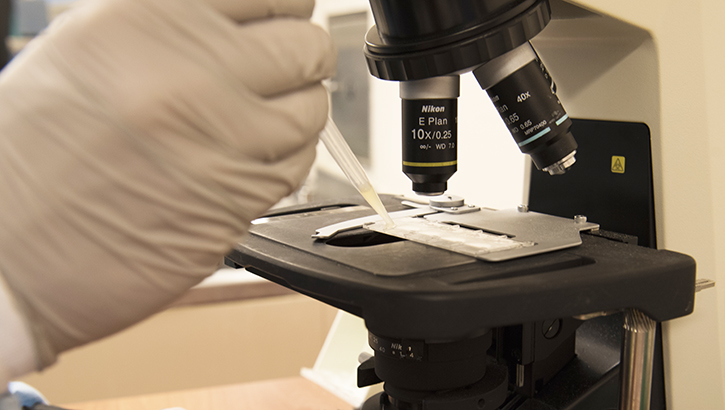
The Joint Pathology Center plays a unique role in the fight against COVID-19
A Determined Descendant and a Navy Hospital's Response to COVID-19
Article
6/9/2020
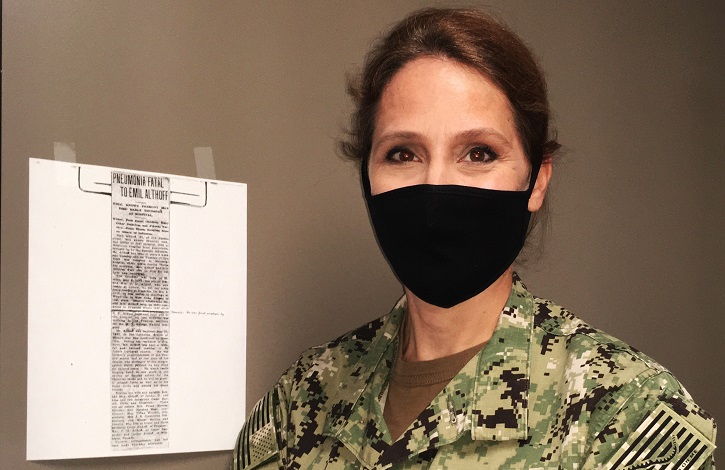
Althoff and her team at the Quality Management directorate serve as a locus of coordination for clinical support operations.
Genetic sequence data for SARS-CoV-2
Infographic
6/5/2020

Genetic sequence data for SARS-CoV-2, the virus that causes #COVID19, plays a vital role in force health protection efforts within the DoD. To jumpstart sequencing efforts, the Armed Forces Health Surveillance Branch's Global Emerging Infections Surveillance and Response applied a collaborative approach to sequencing capabilities. Resulting sequence data will provide critical information about transmission patterns, track diagnostic effectiveness, and guide the development and evaluation of medical countermeasures.
Putting talent to work
Article
6/5/2020
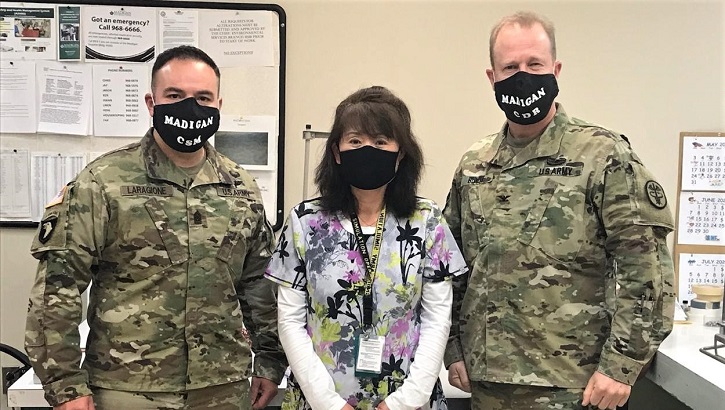
One seamstress took it upon herself to create face coverings for her colleagues.
DoD Establishes Collaborative Virus Genetic Sequencing Capability for COVID-19
Article
6/5/2020
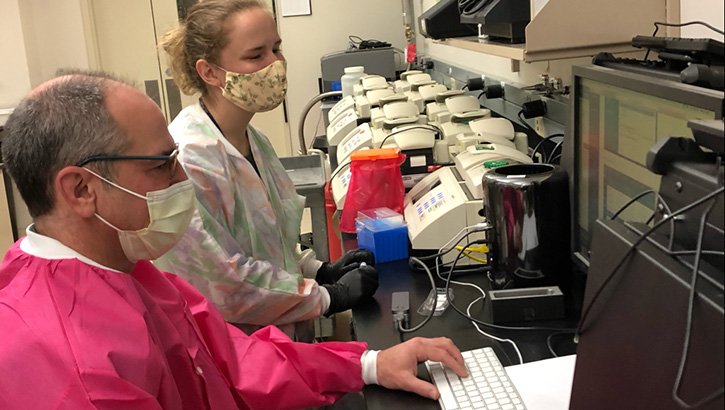
COVID-19 sequencing process will provide military commanders and other DoD leadership with critical information to guide force health protection decision-making.
Communication to ABA Providers Regarding Continued Temporary Authorization to Utilize Telehealth for CPT Code 97156 During the COVID-19 National Emergency
Publication
6/3/2020
TRICARE is announcing the continuation of the temporary exception to policy regarding the use of synchronous telehealth (TH) capabilities (both audio and video) for Applied Behavior Analysis (ABA) Family Adaptive Behavior Treatment Guidance services specifically during this COVID-19 pandemic.
WRNMMC Operates Drive-Up Immunization Clinic
Article
6/3/2020
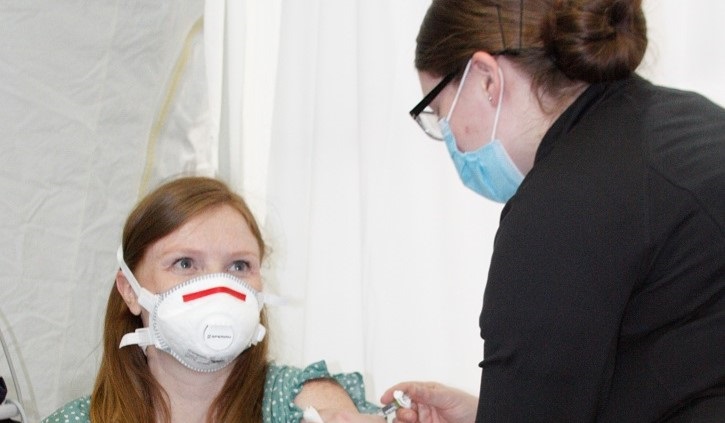
Parents and others (are encouraged) to maintain their immunization health during COVID-19.
TRICARE Reserve Select (TRS) Health Plan Reinstatement During COVID-19 National Emergency
Fact Sheet
6/2/2020
Fact sheet explaining that explaining that TRICARE Reserve Select beneficiaries now have five months to reinstate terminated coverage after their last paid-through date before a 12-month lockout period will apply.
The 150th Security Forces Squadron supports NM COVID-19 response effort
Article
5/29/2020
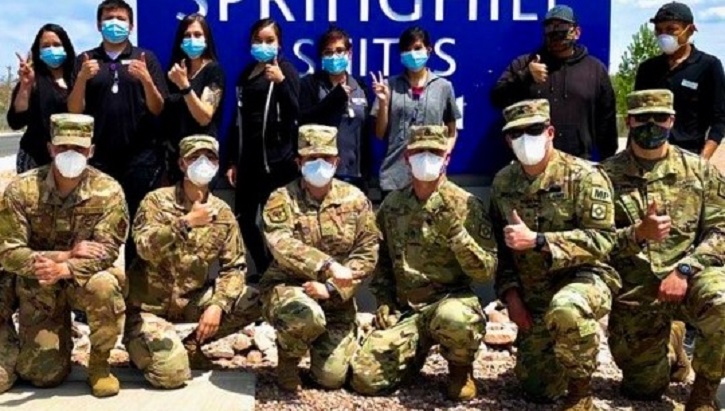
The 150th Security Forces Squadron and the New Mexico National Guard’s Joint Task Force COVID-19 are providing support that may not otherwise be available to New Mexico communities and their citizens.
Building Your Mental Health Through Resiliency
Article
5/29/2020
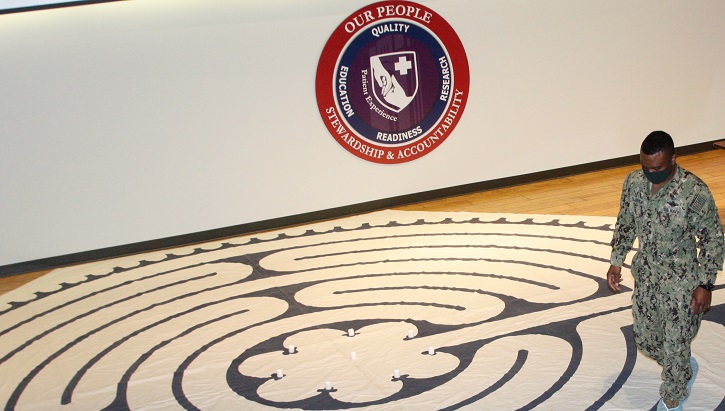
Being able to think about things from a different perspective is critical.
DoD experts address COVID-19 effects on mental health
Article
5/29/2020

As the world adjusts to a new normal, here’s how to keep mentally healthy.






















.png)











No hay comentarios:
Publicar un comentario